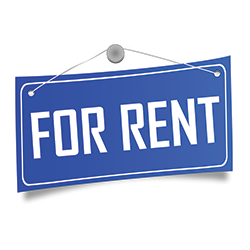|
REGISTRATION REQUIRED
exhibiting 101
 Ahead of the Pack
Avoid setup snafus, sidestep costly last-minute purchases, and set yourself up for on-site success by following the tips in this trade show packing primer. By Betsy Earle
When I first started working in the trade show industry, I thought that the busier I was during a booth install, the better things were going. Turns out my thinking couldn't have been further from the truth. Preparedness before arriving at a convention center is what distinguishes an excellent trade show manager from a good one. When you are organized, you have the mental clarity necessary to make better decisions when things get out of order, as we all know they often do.
Since on-site peace of mind is a result of getting your ducks in a row long before you step foot in a venue – e.g., when you are packing your boxes and crates – here are some tried-and-true tips for ensuring you have everything you need, you know how to find it, and it arrives in one piece. If well begun is half done, then following this advice will set you up for on-site success. ➤ Create an itemized packing list for your exhibit property. Productivity expert David Allen, the author of "Getting Things Done," has been preaching to us for years about the value of doing a "brain dump" and putting together a list of everything we need to do on paper instead of storing it in our heads. This advice applies directly to packing for a trade show. In our current age of information overload and notifications constantly being thrown in our direction, it's more important than ever to get what's in our brains onto a piece of paper or in an electronic document. It's far easier to check an item off a list than trying to remember what it was you wanted to add to a box or crate. I've found that the most effective way to do this is through project-management software. I keep all of my trade show tasks in one app that includes a digital notebook where I list out things I need to remember. The cool thing about storing these documents electronically is that I can copy and paste items or entire lists and add or subtract from them as new info becomes available, so I rarely have to start a list from scratch and my documents are always up to date. When compiling a packing list, take your time to be sure your document is comprehensive. Bulky, structural pieces of exhibitry, such as back walls and reception desks, will be easy to remember, but ancillary items, e.g., tablecloths, arm lights, extension cords, etc., tend to be overlooked, which results in last-minute scrambles to secure rental units on the show floor. If your exhibit setups tend to be pretty standard across multiple shows, it may be helpful to format your packing lists in two parts: a master list of items that are always needed regardless of the event, followed by a fill-in-the-blank section of show-specific items, including product samples, giveaways, etc. ➤ Remember to include photos and important documents. Most seasoned exhibit managers regularly take photos of their carefully packed crates and/or boxes and include these pics with their shipments. I recommend this practice, as it accomplishes two objectives. First, it helps your dismantle crew repack your containers in the same configuration, thereby ensuring that everything fits and is in its proper place. Second, should your shipment get damaged en route, having photographic evidence of your packed container proves that the items were shipshape when they left your facility. In addition to slipping photos into the shipping pockets on the inside of your crates, it's a good idea to include copies of your CAD diagrams, installation plans, shipping manifests, and any packing information. And always remember to remove old shipping labels from the outsides of your containers to avoid any possibility of your freight being sent to the wrong destination. (Yes, I've seen it happen!) ➤ Be mindful of your graphics. Since graphics are especially difficult and costly to replace on site, pay close attention to how these are packed. Roll or fold silicone-edge graphics (SEGs) with the printed side facing in, which will ensure that exposure to dust, grime, dirty hands, and skin oils is limited to the back side of the SEG, and slide the graphic into a clear plastic bag. I also like to print out descriptions of each graphic and slip the sheets into the bags so SEGs can be quickly identified. Also, it doesn't hurt to bring a few extra bags to the show, as these plastic protectors seem to magically disappear when it comes time for teardown. In an emergency, you can wrap SEGs in stretch wrap much like you would leftover food. If you are exhibiting in a small pop-up booth, pack a portable steamer to get the wrinkles out of your graphics and guarantee a professional presentation. You can find decent steamers for around $50, and these tools are far easier and safer to use than a scorching iron, especially on backdrop fabrics. Larger exhibitors can take note of this advice too, but installation-and-dismantle crews typically come prepared with a steamer. For large hard-panel infills, you'll want to pack these separately on their own skid or in their own crate to minimize the chance of them getting dented by a loose piece of exhibitry. Your infills' corners tend to be the most prone to damage, so I recommend always packing them with the manufacturer-provided protective materials or at the very least covering the corners with bent pieces of cardboard. On this note, it is important to let your installation crew know during setup that they should retain these packing materials for the forthcoming dismantle process. After all, you want to use the same diligence when packing your outbound freight. ➤ Protect your tech. Monitors are prone to damage when shipped on their sides, so always pack your flatscreens in the upright position. I try to keep the original boxes and packaging for my clients' monitors, as these will do a far better job of protecting audiovisual assets than a few scraps of Bubble Wrap. Still, since it's uncomfortably easy for monitors to get banged up during shipping, I'll repeat my refrain that it's almost always better to rent monitors from a professional source. However, I recognize doing so can cost more in the long run, so I'll just advise you to pack your monitors securely and prepare a Plan B. If you need to bring tablets and/or lead-gathering equipment to the show, consider packing these items last so they'll be at the top of your shipment and therefore accessible for easy pre-show charging. Or, while I always suggest reducing your number of small shipments as much as possible, these might be items you want to send separately to your hotel so you'll know their whereabouts at all times. But regardless of their final destination, pack this equipment carefully and in its own container. ➤ Pack your shipments in reverse. When unpacking a crate, skid, or large fiber case, it's cumbersome to take everything out prior to setting up. So think about the order in which you'll need to access things. Unfortunately, the largest items are often the ones that you need first. For example, you wouldn't want to put your pop-up frames on top of the glass shelves you're using to display products. As a result, you might be at the mercy of physics and have to put your frames at the bottom of the crate. But if there are things that you know you won't need right away, such as cleaning supplies, product literature, and tchotchkes, stick them in the bottom of your shipping container if you can. ➤ Consolidate as much as possible. Material handling is a 101 column unto itself, but the long and short of it is that the more you consolidate your shipment into fewer containers, the more money you'll save. Packing extra supplies, backups, and the kitchen sink is a compelling notion, especially if you're planning for any eventuality, but consider that your material-handling bill is heavily impacted by the number of pieces in your shipment. In other words, one large crate can rack up a smaller material-handling invoice than two lighter containers. So when ordering crates, think about the largest item you have to pack, and then work backwards, using the extra cavity to store sequentially smaller items. ➤ Remember to pack a gang box. Amid the flurry of pre-show prep, don't forget to prepare a gang box, a fancy name for any large container in which one keeps supplies they need on a regular basis. In the trade show world, gang boxes are where exhibit managers store anything and everything they think might come in handy during setup and teardown, e.g., permanent markers, scissors, first-aid kits, batteries, etc. Having all of these odds and ends in one place reduces show-floor headaches, saves time, and is often far more economical than buying last-minute necessities on site. For some of my clients, a gang box is nothing more than a large plastic bin, while others have elaborate rolling chests with multiple drawers and cubbies. Which route is best for you will depend on the complexity of your program, but see the sidebar on page 18 for a list of my gang-box essentials. The show floor is an imperfect place, and it's quite a challenge to remember every single thing. However, putting in the work before leaving your office is worth every ounce of effort, and it will pay you back tenfold. Now we just need a game plan for packing our suitcases... E
 Betsy Earle, CTSM
Betsy Earle, CTSMmanaging director and founder of Event Driven Solutions LLC. Earle obtained her MBA at the University of Miami and earned her Diamond-level CTSM designation in 2018. Exhibiting101@exhibitormagazine.com
|
|
||||||||||||
|
||||||||||||||||||||||||||||
|
|
||||||||||||||||||||||||||||
|
TOPICS Measurement & Budgeting Planning & Execution Marketing & Promotion Events & Venues Personal & Career Exhibits & Experiences International Exhibiting Resources for Rookies Research & Resources |
MAGAZINE Subscribe Today! Renew Subscription Update Address Digital Downloads Newsletters Advertise |
FIND IT Exhibit Producers Products & Services All Companies Get Listed |
EXHIBITORLIVE Sessions Exhibit Hall Exhibit at the Show Registration |
ETRAK Sessions Certification F.A.Q. Registration |
EDUCATION WEEK Overview Sessions Hotel Registration |
CERTIFICATION The Program Steps to Certification Faculty and Staff Enroll in CTSM Submit Quiz Answers My CTSM |
AWARDS Exhibit Design Awards Portable/Modular Awards Corporate Event Awards Centers of Excellence |
NEWS Associations/Press Awards Company News International New Products People Shows & Events Venues & Destinations EXHIBITOR News |
||||||||||||||||||||
|
||||||||||||||||||||||||||||






